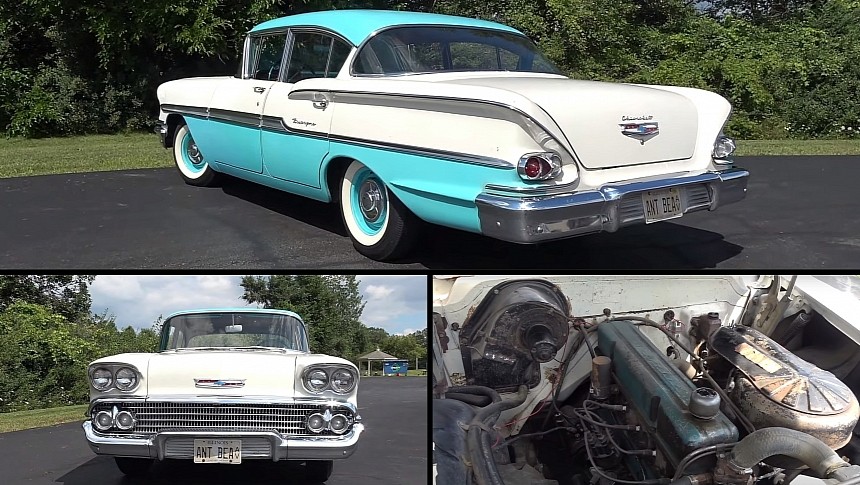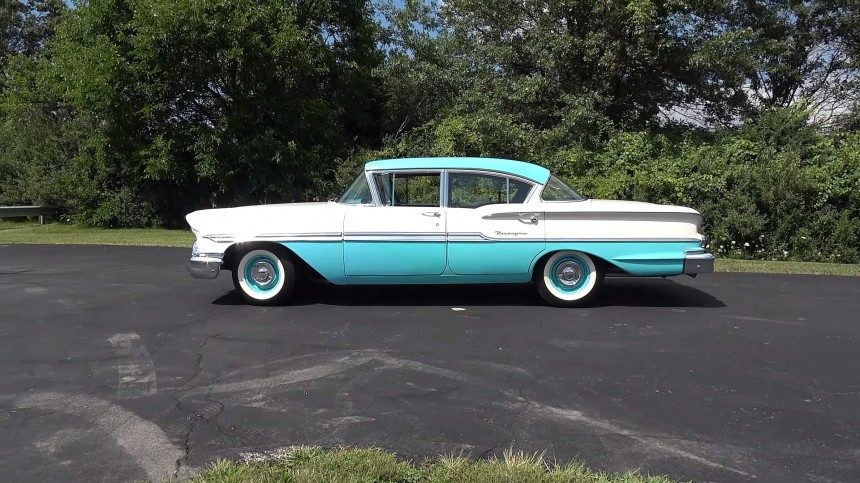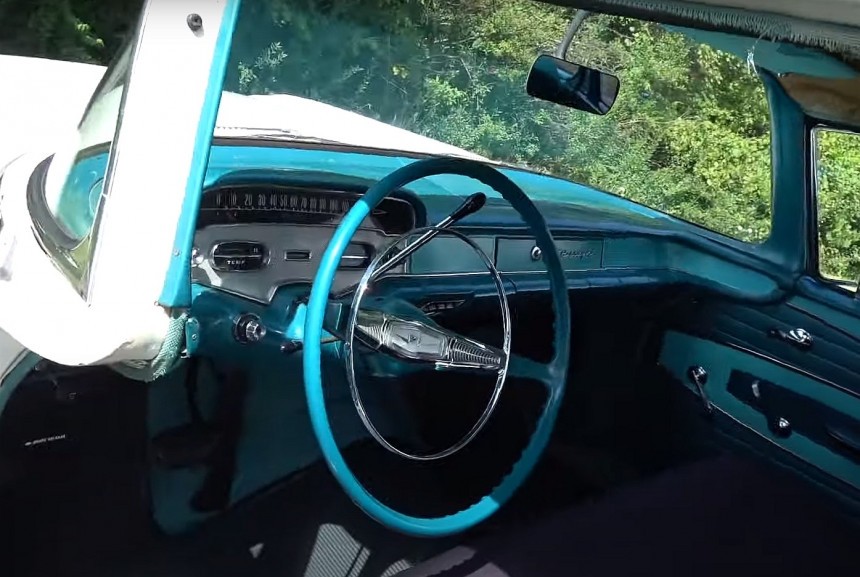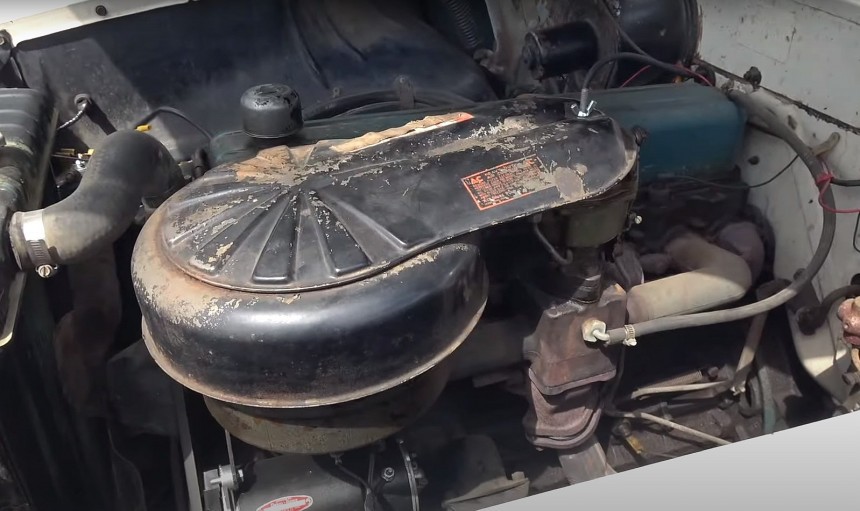1958 was a big year for Chevrolet. GM celebrated 50 years of automobile production that year and commissioned new range-topping models with a similar design for each brand. Chevrolet introduced the Impala as a top-of-the-line full-size car.
Slotted above the already familiar Bel Air, the Impala was part of a four-trim lineup that also included the Delray as a base model. The latter badge had been used on full-size Chevys since 1954. But the roll-out included another brand-new nameplate, the Biscayne.
Named after Biscayne Bay, near Miami, Florida, the new trim was placed between the Delray and Bel Air in the lineup. Unlike the Delray, which was discontinued after 1958, the Biscayne soldiered on through 1972. It became the entry-level Chevrolet full-size in 1959 and spawned a lower-priced fleet version in 1960.
Chevrolet redesigned its full-size car lineup in 1959, leaving all 1958 versions, regardless of trim, as one-year gems. So, while it's not as sought-after as the Impala or the Bel Air, the 1958 Biscayne is just as unique. And because it doesn't get as much love as its fancier siblings, it's also notably scarcer nowadays.
Chevrolet sold a whopping 1.2 million full-size cars in 1958. There's no specific breakdown based on trim levels, but some experts agree that about 15% of the vehicles sold that year were range-topping Impala models. This estimate leaves a little more than one million cars with Bel Air, Biscayne, and Delray badges.
We can assume that the Bel Air was a more popular choice then, so maybe we're looking at around 300,000 to 400,000 Biscaynes sold in 1958. Indeed, that's a massive number that makes the first-year full-size quite common. However, the survival rate of these cars is very low.
Again, I don't have any precise figures to run by, but you can check out video footage from any junkyard out there, and you'll get what I'm saying. Most Biscaynes were abandoned once newer cars became available. And those that weren't scrapped immediately are still rotting away, and many are still parked in barns and backyards. Moreover, examples with solid body panels are usually parted out to restore Impalas.
Finally, 1958 Biscaynes rarely get restored. Their current market value is low compared to the Impalas and even the Bel Airs, so they're usually rendered as classics that aren't worth reworking from the ground up. All told, solid examples that still run and drive are hard to come by nowadays.
That said, if you've seen a 1958 Biscayne on the road recently, you can consider yourself very lucky. If you haven't, classic car enthusiast Lou Costabile just documented what may just be the finest survivor of its kind. Yup, this gorgeous two-tone Biscayne is not the result of a rotisserie restoration but a classic that's been pampered since day one.
How is that possible? Well, the original owner kept it through the 1980s and didn't drive it much. Specifically, this car was purchased new by a lady who only drove it to the church and the school she was teaching at. When she passed away, the Biscayne was bought by the current owner's uncle and went into storage for about ten years.
Fast forward to 1998, the four-door sedan ended up with the current owner in the same condition you see today. It had only 29,000 miles (46,671 km) on the odo, and Terry drove it for almost 10,000 more miles (16,093 km) through 2023. The odometer shows 38,500 miles (61,960 km) as of this writing, which is impressively low for a vehicle that's 65 years old.
On top of that, the Biscayne is in fantastic condition. Look close enough, and you'll notice some scratches and chips in the paint, but that's about it. There's only minor wear and tear inside the cabin, while the engine bay is cleaner than most modern cars. Granted, the block and some other components could use a repaint, but it's the kind of patina I'd also like to preserve.
The car also sports a lovely color combo. While the exterior flexes a classy white over turquoise layout (with a turquoise roof), the interior is draped in two shades of green. Chevrolet called these colors Glen Green and Forest Green in 1958. The exterior is Tropic Turquoise with Arctic White. Chevy also offered a similar Snowcrest White at the time, but only Arctic White was available for two-tone finishes.
Output-wise, this Biscayne relies on a 235-cubic-inch (3.9-liter) inline-six engine. Rated at 136 or 145 horsepower when new, it was the entry-level mill for any full-size Chevy at the time. Far from impressive or desirable nowadays, but the mill sounds healthy, and it's potent enough to get the massive four-door to decent speeds.
I know it would've been nicer to see a V8 under the hood, but I don't care, honestly. This Biscayne is way too nice and original to complain about lack of power. You won't see another one like it on the road in a very long time. Kudos to the owner for preserving it as is.
Named after Biscayne Bay, near Miami, Florida, the new trim was placed between the Delray and Bel Air in the lineup. Unlike the Delray, which was discontinued after 1958, the Biscayne soldiered on through 1972. It became the entry-level Chevrolet full-size in 1959 and spawned a lower-priced fleet version in 1960.
Chevrolet redesigned its full-size car lineup in 1959, leaving all 1958 versions, regardless of trim, as one-year gems. So, while it's not as sought-after as the Impala or the Bel Air, the 1958 Biscayne is just as unique. And because it doesn't get as much love as its fancier siblings, it's also notably scarcer nowadays.
Chevrolet sold a whopping 1.2 million full-size cars in 1958. There's no specific breakdown based on trim levels, but some experts agree that about 15% of the vehicles sold that year were range-topping Impala models. This estimate leaves a little more than one million cars with Bel Air, Biscayne, and Delray badges.
Again, I don't have any precise figures to run by, but you can check out video footage from any junkyard out there, and you'll get what I'm saying. Most Biscaynes were abandoned once newer cars became available. And those that weren't scrapped immediately are still rotting away, and many are still parked in barns and backyards. Moreover, examples with solid body panels are usually parted out to restore Impalas.
Finally, 1958 Biscaynes rarely get restored. Their current market value is low compared to the Impalas and even the Bel Airs, so they're usually rendered as classics that aren't worth reworking from the ground up. All told, solid examples that still run and drive are hard to come by nowadays.
That said, if you've seen a 1958 Biscayne on the road recently, you can consider yourself very lucky. If you haven't, classic car enthusiast Lou Costabile just documented what may just be the finest survivor of its kind. Yup, this gorgeous two-tone Biscayne is not the result of a rotisserie restoration but a classic that's been pampered since day one.
Fast forward to 1998, the four-door sedan ended up with the current owner in the same condition you see today. It had only 29,000 miles (46,671 km) on the odo, and Terry drove it for almost 10,000 more miles (16,093 km) through 2023. The odometer shows 38,500 miles (61,960 km) as of this writing, which is impressively low for a vehicle that's 65 years old.
On top of that, the Biscayne is in fantastic condition. Look close enough, and you'll notice some scratches and chips in the paint, but that's about it. There's only minor wear and tear inside the cabin, while the engine bay is cleaner than most modern cars. Granted, the block and some other components could use a repaint, but it's the kind of patina I'd also like to preserve.
The car also sports a lovely color combo. While the exterior flexes a classy white over turquoise layout (with a turquoise roof), the interior is draped in two shades of green. Chevrolet called these colors Glen Green and Forest Green in 1958. The exterior is Tropic Turquoise with Arctic White. Chevy also offered a similar Snowcrest White at the time, but only Arctic White was available for two-tone finishes.
I know it would've been nicer to see a V8 under the hood, but I don't care, honestly. This Biscayne is way too nice and original to complain about lack of power. You won't see another one like it on the road in a very long time. Kudos to the owner for preserving it as is.















